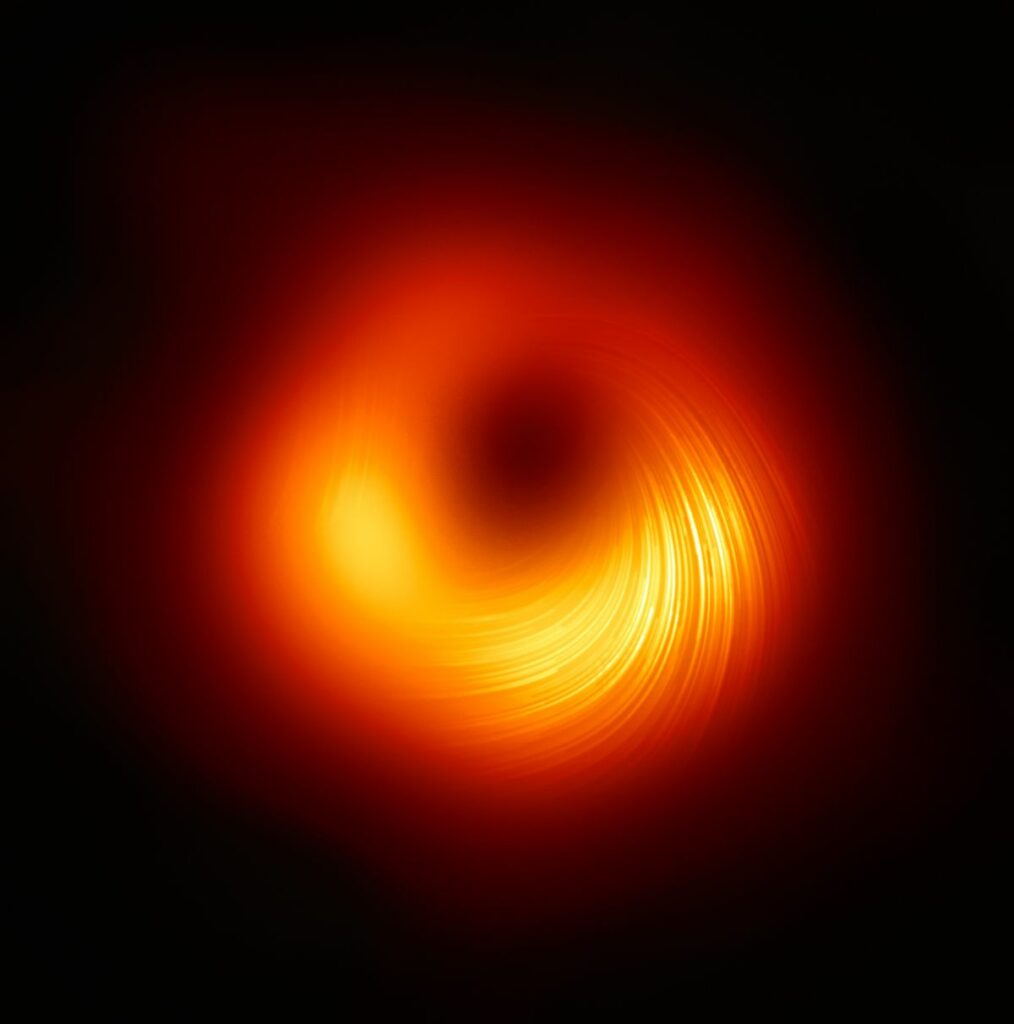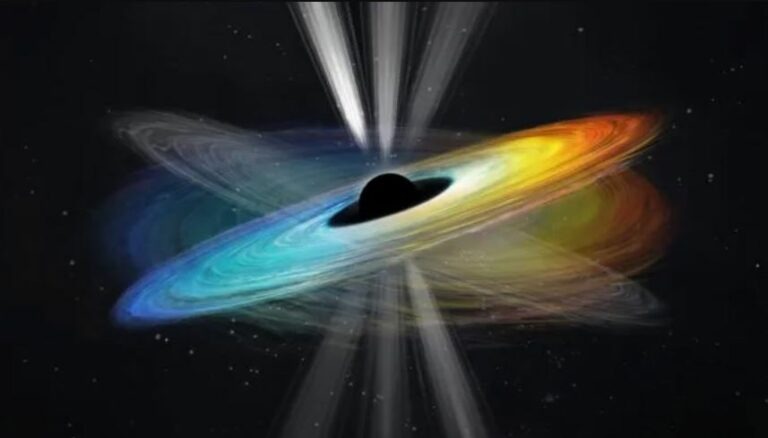Scientists have recently demonstrated that the colossal black hole known as M87 is indeed rotating, further corroborating Albert Einstein’s theory of relativity.
Astronomers have spotted two huge jets fired off by the ‘monster’ black hole M87 wobbling on an 11-year cycle, proving for the first time that black holes spin.
Astronomers have found the first direct evidence of a black hole spinning, and it’s confirmed Einstein’s theory of relativity yet again.
The discovery was made by studying powerful jets of energy beamed from the solar system-size black hole at the center of the neighboring Messier 87 galaxy. The black hole, called M87, is the best studied black hole to date and the first to ever be directly imaged in 2019, with its “donut hole” shadow crowned by a fuzzy halo of light.
Astrophysicists have long predicted that black holes spun, but the challenge of imaging the cosmic monstrosities has, until now, made evidence hard to come by. The researchers published their findings Sept. 27 in the journal Nature.
“After the success of black hole imaging in this galaxy with the [Event Horizon Telescope (EHT)], whether this black hole is spinning or not has been a central concern among scientists,” Kazuhiro Hada, an astronomer at the National Astronomical Observatory of Japan, said in a statement. “Now anticipation has turned into certainty. This monster black hole is indeed spinning.”
Black holes have such a powerful gravitational pull that nothing (not even light) can escape their maws, but this doesn’t mean they can’t be seen. This is because active black holes are surrounded by accretion disks — vast plumes of material stripped from gas clouds and stars, heated to red-hot temperatures by friction as it spirals into the black holes’ mouths.

Some of this material is spat out, forming two jets of hot material that, in roughly a tenth of cases, travels at 99.9% the speed of light. How black hole jets acquire the enormous energy needed to do this has been a mystery, but physicists used Einstein’s general theory of relativity to suggest the material could get it from the cosmic monsters’ magnetic fields, if they were spinning rapidly on their axes.
Black holes likely acquired some of their spin from their early days as stars that, as they suddenly collapsed inward, became like figure skaters pulling in their arms to rotate faster. Over time, this spin probably grew faster due to the effect of infalling matter from stars ripped apart by the black holes, or from catastrophic collisions with other massive objects.
To search for clues of this elusive spin, astronomers turned to the M87 supermassive black hole, an enormous space-time tear that uses its mass (6.5 billion times that of the sun) to anchor an entire galaxy.
By studying M87* using a global network of radio telescopes from 2000 to 2022, the astronomers found that the black hole’s jets were ticking back and forth like metronomes marking out an 11-year cycle. This showed that the black hole was precessing or wobbling on its axis as it rotated, just like a spinning top.
“We are thrilled by this significant finding,” lead author Cui Yuzhu, an astronomer at Zhejiang Lab in Hangzhou, China, said in the statement. “Since the misalignment between the black hole and the disk is relatively small and the precession period is around 11 years, accumulating high-resolution data tracing M87’s structure over two decades and thorough analysis are essential to obtain this achievement.”
Beyond confirming Einstein’s theory yet again, a number of exciting questions emerge from the discovery of black hole spin. Among them are ones relating to what catastrophic events could have caused the rapid rotation, as well as the possibility of discovering photon spheres — a faint ring of light surrounding the black hole that could give important hints into a theory of quantum gravity.
Source: LiveScience
Do not forget to share your opinion with us to provide you with the best posts !




0 Comments